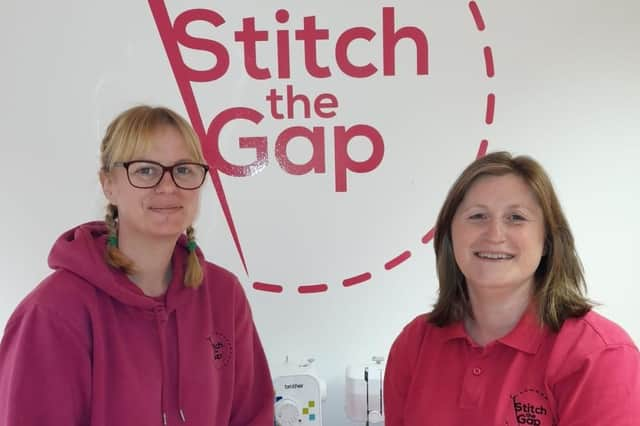We'd like to see a sewing machine in every home to tackle climate change - Trish Papworth


Sewing can be described as a creative craft, a form of therapy thanks to the soothing whirring of a sewing machine motor or the repetitive motion of stitching, and a social, shared experience for those who attend group classes or workshops. However, sewing could also have an important role to play in tackling the climate emergency and contributing to our net zero targets.
Stitch the Gap has been teaching sewing skills to children and adults since 2019. Using donated fabric, we bridge the skills gap by giving people the practical tools and know-how to take direct action against environmental change. Our sessions highlight the impact that fast fashion has had on our lives and empowers people to break that cycle and encourage longer-term climate action within our community. Participants leave our sewing sessions with the confidence to work with textiles and we bring them into direct contact with why climate action matters through the lens of learning.
Advertisement
Hide AdAdvertisement
Hide AdWe have seen first-hand the mental health impact that joining our sewing classes can have, whether from one of our sessions for carers to show how fashion can be adapted for better accessibility or our summer holiday camps. We have also newly introduced bereavement workshops designed to help family and friends celebrate their loved ones by repurposing favourite items or garments into keepsakes for their own homes.
The Stitch the Gap toolkit to repair, reuse and re-purpose fabric consists of sewing lessons, a lending library of sewing machines and a servicing and repair service. Beginners can learn how to sew, anyone without a machine at home can borrow one, and anyone with a sewing machine needing fixed can bring it along for service and repair. If zero waste is the ambition for the country, we need to offer routes for people to donate unwanted textiles as well as giving people access to the skills and machines required to transform them into something new.
While the zero waste movement is growing, it is a cultural shift that cannot happen overnight. In the meantime, expansion and development of Stitch the Gap wouldn’t be possible without valuable funding and support from organisations like Firstport and Social Investment Scotland (SIS) who have helped us to understand that with the right investment we can have a greater impact. For instance, through SIS’s Ambitions programme, we had the opportunity to pitch for funding that has since been used to purchase an electric van, increasing our impact by expanding our capacity to accept donations of sewing machines and fabric.
It’s an exciting time to be involved with a project that has such a tangible benefit amid the climate emergency and being able to reuse, repurpose and recycle textiles is such an important skill to have. But Stitch the Gap and learning to sew can be much more than that, it’s about sustainability as well as a creative outlet, a safe space and an opportunity to socialise.
Trish Papworth, co-founder of Stitch the Gap
Comments
Want to join the conversation? Please or to comment on this article.